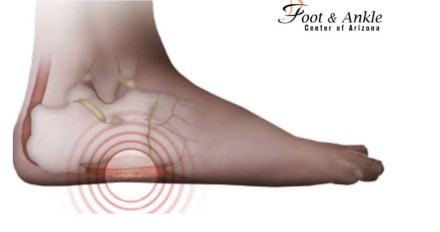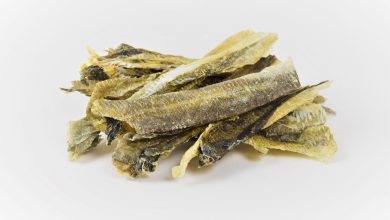Which Conditions Cause Pain on Side of Foot?
Which Conditions Cause Pain on Side of Foot?

Experiencing pain on the side of your foot can be both frustrating and debilitating. The foot is a complex structure made up of bones, ligaments, tendons, and muscles, all of which work together to provide support and mobility. When any of these components are injured or inflamed, it can lead to pain on the side of the foot. In this blog post, we will explore the various conditions that can cause this type of pain, how they are diagnosed, and the treatment options available.
Common Conditions Causing Pain on Side of the Foot
Peroneal Tendonitis
Peroneal tendonitis occurs when the tendons that run along the outside of the ankle and foot become inflamed. This condition often results from overuse, especially in athletes who participate in activities that involve repetitive ankle motion, such as running or jumping. Symptoms include pain on side of the foot, swelling, and difficulty walking.
Stress Fractures
Stress fractures are small cracks in the bone that can develop over time due to repetitive force or overuse. The fifth metatarsal, located on the outer side of the foot, is a common site for stress fractures. Patients typically experience pain on the side of the foot that worsens with activity and improves with rest.
Ankle Sprains
Ankle sprains are injuries to the ligaments that connect the bones of the ankle. When these ligaments are stretched or torn, it can cause significant pain on the side of the foot. Ankle sprains are often caused by rolling or twisting the ankle, and symptoms include swelling, bruising, and instability.
Cuboid Syndrome
Cuboid syndrome is a condition in which the cuboid bone, located on the outer side of the foot, becomes partially dislocated. This can result from trauma or repetitive strain. Symptoms include sharp pain on side of the foot, difficulty bearing weight, and a feeling of instability.
Bunions
Bunions are bony bumps that form on the joint at the base of the big toe. Although bunions primarily cause pain on the inner side of the foot, they can also lead to discomfort on the outer side due to altered foot mechanics and pressure. Symptoms include a visible bump, swelling, and redness.
Arthritis
Arthritis, including osteoarthritis and rheumatoid arthritis, can affect any joint in the body, including those in the foot. When arthritis affects the joints on the side of the foot, it can cause pain, stiffness, and swelling. Patients may also experience reduced range of motion and difficulty walking.
Tarsal Coalition
Tarsal coalition is a condition where two or more of the tarsal bones in the foot are fused. This abnormal connection can restrict movement and cause pain on the side of the foot, especially during physical activity. Symptoms often appear in adolescence and can include stiffness and flatfoot.
Gout
Gout is a form of inflammatory arthritis caused by the buildup of uric acid crystals in the joints. While gout commonly affects the big toe, it can also cause pain on the side of the foot. Symptoms include sudden and severe pain, redness, swelling, and warmth in the affected area.
Nerve Entrapment
Nerve entrapment occurs when a nerve is compressed or irritated. In the foot, the sural nerve, which runs along the outer side, can become entrapped, leading to pain on the side of the foot. This condition can result from trauma, repetitive stress, or anatomical abnormalities.
Plantar Fasciitis
Plantar fasciitis is a condition characterized by inflammation of the plantar fascia, the thick band of tissue that runs along the bottom of the foot. While the pain is typically felt in the heel, it can also radiate to the side of the foot. Symptoms include sharp pain with the first steps in the morning and after periods of inactivity.
Diagnosis and Treatment
Diagnosing Pain on the Side of the Foot
Diagnosing the cause of pain on the side of the foot involves a thorough medical history, physical examination, and, if necessary, imaging studies such as X-rays, MRI, or CT scans. At the Foot and Ankle Center of Arizona, Dr. Kris A. DiNucci and his team utilize advanced diagnostic tools to accurately identify the underlying condition.
Treatment Options
The treatment for pain on the side of the foot depends on the underlying cause. Some common treatment options include:
- Rest and Ice: Reducing activity and applying ice can help decrease inflammation and pain.
- Medications: Over-the-counter pain relievers, such as ibuprofen, can help manage pain and inflammation.
- Physical Therapy: Exercises and stretches can strengthen the foot and ankle, improve flexibility, and reduce pain.
- Orthotics: Custom orthotic devices can provide support and correct foot mechanics.
- Surgery: In severe cases, surgical intervention may be necessary to correct structural issues or remove damaged tissue.
Frequently Asked Questions
Q: What should I do if I experience pain on the side of my foot?
If you experience pain on the side of your foot, it’s important to rest and avoid activities that exacerbate the pain. Applying ice and taking over-the-counter pain relievers can help manage symptoms. If the pain persists, schedule an appointment with a foot and ankle specialist for a thorough evaluation.
Q: How can I prevent pain on the side of my foot?
To prevent pain on the side of your foot, wear properly fitting shoes that provide adequate support, avoid overuse, and incorporate stretching and strengthening exercises into your routine. Maintaining a healthy weight can also reduce stress on your feet.
Conclusion
Pain on the side of the foot can result from a variety of conditions, each requiring a tailored approach to treatment. At the Foot and Ankle Center of Arizona, we are dedicated to providing comprehensive care to address your foot and ankle concerns. If you are experiencing pain on the side of your foot, don’t hesitate to reach out to our knowledgeable and hospitable staff. Our Scottsdale location is ideal for those seeking expert care and personalized treatment plans. Contact us today to schedule an appointment and take the first step towards pain-free living.








